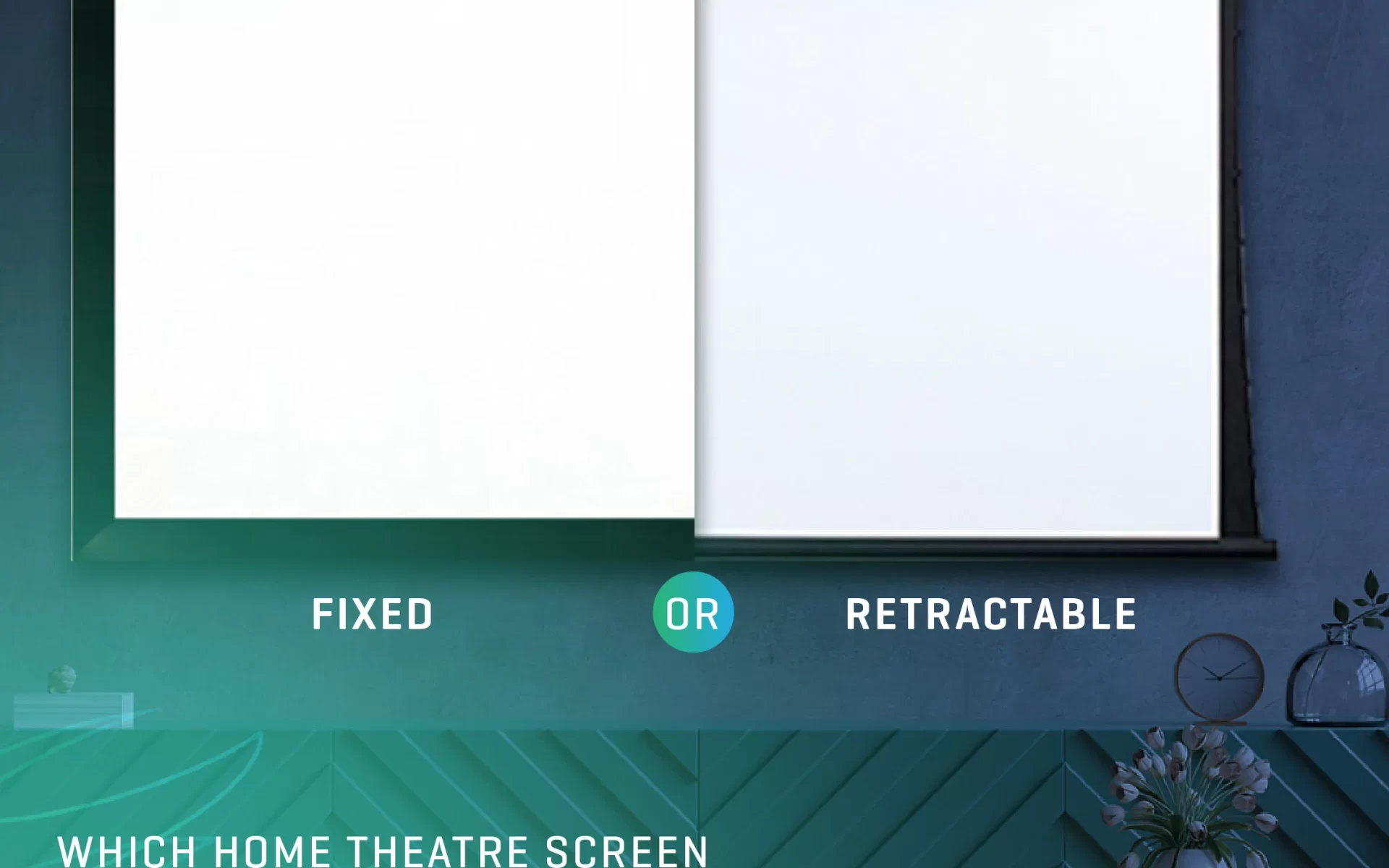
Looking for a home theatre screen but not sure whether you should buy a fixed projection screen or a retractable one?
We understand the confusion!
When it comes to deciding on one, there are many factors that go behind.
This article will explain the difference between the both to help you make an informed decision.
Let’s get started.
First, let’s understand what exactly the two screen types stand for.
As the name itself suggests, a Fixed Frame Projection Screen is installed in a stable set-up & is fixed on an empty wall. The creation process involves stretching the screen material onto a thick metal frame.
On the other hand, Retractable Projection Screen is a portable screen that can be rolled into a long metal case to mount to a wall or any other support. It requires a strong built-in electric motor that is used to raise or lower the screen.
The key differences between both types:
Size
Fixed frames are televisions that are a lot flatter, bigger & give an immersive experience that an ordinary television can’t. While the retractable screen may not be as big as they need to be moved & handled with caution while rolling and winding them up after use.
Set-up
Fixed projection screens are usually installed in a stable home theatre set up for they need a large wall/room dedicated especially to them.
This doesn’t stand true for retractable screens as they could be wrapped up & installed anywhere anytime you want.
Challenges
Both the screen types require installation, but in the case of fixed frames, it’s one-time and relatively easy. Retractable screens would require you to go through the installation every time you use them and keep it back.
Full-time vs part-time availability of the wall
The above point clearly indicates one more difference between these two types. The fixed frame will demand a full-time use of the wall while with the retractable screen you can put the wall to any other use while not using the screen.
Cost
A retractable screen might add to your cost as there are multiple electrical supplies required while putting all the elements together. The mechanical elements are even required for fixed frames, but that’s just one-time fixing and hence becomes more pocket-friendly.
Popularity
Why people prefer fixed frame screens mostly is because they’re more recognised than the retractable ones. You would any day have maximum information available out there on those compared to the retractable screen.
Do retractable screens get wrinkled due to keeping them folded?
This is one of the misconceptions that exist in regards to retractable screens. There is a technique to be followed while opening and folding it back to keep it flat, clear & wrinkle-free.
Only if you don’t extend it completely, it might get wrinkles. So make sure to be careful while installing it.
Final thoughts!
If you want to avoid the back and forth constantly, go for a fixed frame without a second thought.
But, if you think you don’t need the screen to be there 24/7 & only need it occasionally, a retractable screen is what you’re looking for.
If you’re a first-time buyer and confused as to what screen would be the most suitable for your home theatre set up, you can visit here & find the best home theatre projection screen the market has to offer!
We hope this article finally helps you make that decision whether you want to go for a fixed-frame screen or a retractable one.
Got any more questions that have not been answered yet? Put them in the comments below & our team will be happy to help!
FAQ’s
What is the difference between fixed and retractable projector screens?
Fixed screens are permanently mounted for a dedicated setup, while retractable screens can be rolled up when not in use.
Which is better for a home theater—fixed or retractable screens?
Fixed screens offer better tension and image quality, while retractable screens are ideal for multipurpose rooms.
Do retractable screens affect picture quality?
High-quality retractable screens maintain good picture quality, but fixed screens often provide better flatness and clarity.
What factors should I consider when choosing a screen type?
Consider your room size, usage, budget, and whether you need a permanent or flexible setup.
Does Lumina Screens offer both fixed and retractable options?
Yes! Lumina Screens provides high-quality fixed and retractable projector screens for various home theater needs.
- Date - June 8, 2021